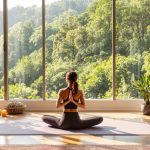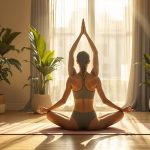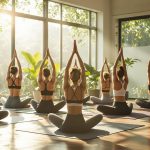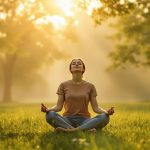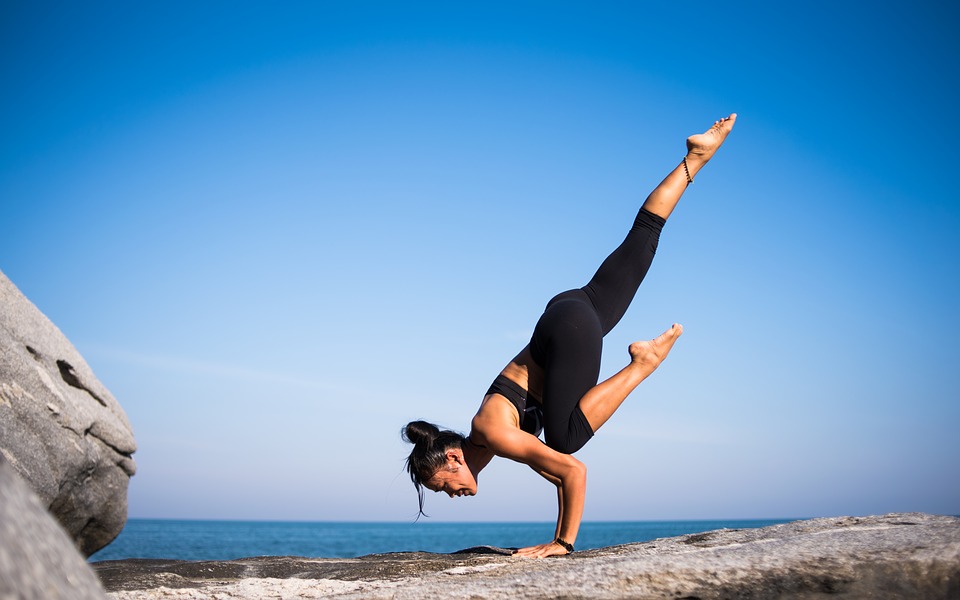
To naturally ease anxiety, embrace yoga as part of your daily routine. This ancient practice calms the sympathetic nervous system and strengthens your emotional resilience. Poses like Child’s Pose or Legs-Up-the-Wall allow deep relaxation and tension release. Breathing techniques lower heart rate and engage the parasympathetic nervous system, inviting a peaceful state. Consistent practice not only manages anxiety but also improves sleep and focus. Use online resources for guided sessions, and ensure a distraction-free space for optimal relaxation. By diving deeper, you’ll find specific routines and tips that maximize these soothing effects.
Understanding Anxiety and Yoga
Anxiety often creeps into our daily lives, but yoga can be a powerful tool to help manage it. By engaging in yoga poses for anxiety, you not only soothe your mind but also provide substantial benefits for your mental health. Yoga, with its emphasis on inward reflection and mindfulness, offers these benefits through practices such as focused breathing, which enhances mental clarity and emotional resilience. When anxiety strikes, it’s your sympathetic nervous system in overdrive. Yoga helps regulate this by gently calming these heightened stress responses. Through deliberate physical movements and breath control, you’ll notice a shift—an easing of tension that helps relieve anxiety.
Incorporating specific poses like Child’s Pose and Legs-Up-the-Wall can make a significant difference. These positions are particularly effective at promoting relaxation and reducing tension, giving you the comfort you’re seeking. But it’s not just about the movement. Mindfulness practices within yoga, such as focused breathing and body awareness, significantly improve your interoception. This means you become more attuned to feelings of anxiety, empowering you to recognize and manage them when they arise.
Regular yoga practice is more than just physical exercise; it’s a commitment to enhancing your overall mental health. With time and persistence, you’ll gain tools to face anxiety with resilience and composure. Embrace yoga as a practical ally in your journey towards mental peace.
Benefits of Yoga for Anxiety
You’ll find countless benefits in integrating yoga into your routine to combat anxiety. Regular yoga practice isn’t just about flexibility; it’s a powerful tool against anxiety symptoms. Studies back this up, showing a marked decrease in anxiety levels among those who practice yoga compared to those who don’t. But how does it work? Well, yoga enhances your emotional regulation. By lowering stress levels and altering brain function, it reduces your emotional reactivity, making it easier for you to manage anxious feelings. This change helps you handle life’s stressors with newfound calmness.
The magic of yoga lies in its combination of breath control and mindfulness, which together foster relaxation and stress relief. Try poses like Child’s Pose or Legs-Up-the-Wall Pose to calm your nervous system and create a peaceful mind. These specific movements offer a gentle path to tranquility.
Consistent yoga practice can also improve sleep quality, a major perk if you’re prone to anxiety. Restful sleep is crucial for maintaining mental health, ensuring you’re better equipped to face the day’s challenges. So, whether you’re seeking stress relief or a more balanced mood, yoga’s benefits are worth exploring for a healthier, anxiety-free life.
Roles of Breathing Techniques
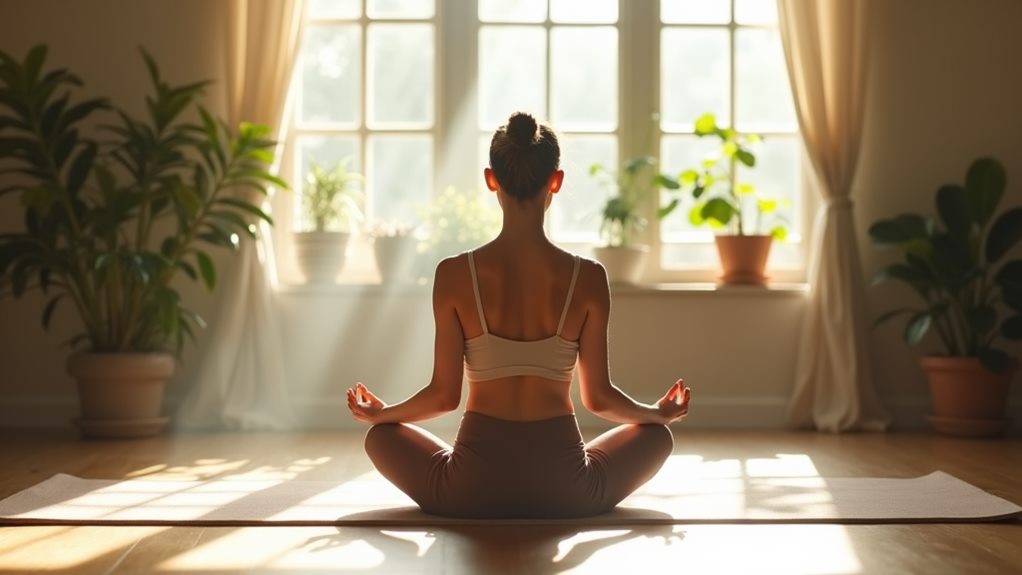
Breathing techniques hold transformative power in the battle against anxiety. If you’re seeking natural methods to calm your mind, controlled breathing is a game-changer. Here’s why these breathing techniques are so effective:
- Activates Relaxation: Diaphragmatic breathing switches on the parasympathetic nervous system, promoting relaxation and combating the anxiety-fuelled stress response. This practice is useful in regulating mood and heart rate, which are key aspects of calming anxiety.
- Lowers Heart Rate: Practices like deep breathing and Nadi Shodhana (alternate nostril breathing) calm your mind by lowering your heart rate. This reduction in anxiety symptoms allows a sense of peace and control over your reactions.
- Promotes Calmness: Long exhalations during breathwork send signals to your brain to relax. They decrease agitation and cultivate an aura of tranquility, easing your mind.
- Heightens Awareness: Mindful breathing sharpens interoception, making you more aware of bodily sensations. This improved awareness is crucial for recognizing and managing anxiety triggers before they escalate.
In the realm of yoga, regularly engaging in these controlled breathing techniques can increase vagal tone, helping you bounce back quicker from stress and enhance emotional regulation. By incorporating these practices into your routine, you nurture an invaluable tool for natural relaxation and anxiety management. So, take a deep breath and start your journey to tranquility.
Grounding Yoga Poses
Imagine standing with steady feet, feeling the ground beneath you, as you embrace the calm that grounding yoga poses offer. Engaging in grounding poses like Child’s Pose and Hero Pose connects you with the earth, promoting a sense of stability that can offer anxiety relief. These poses naturally encourage you to slow down, allowing your body and mind to release tension and anxiety.
It’s not just about physical postures; it involves deliberate mindfulness. Poses like Tree Pose and Triangle Pose help improve balance and focus, drawing your awareness to the present moment. This focus is crucial for managing anxious thoughts that often disrupt your peace. By practicing these poses, you’ll notice they stimulate the vagus nerve—this activation is key for quick relaxation following periods of stress.
Incorporating mindfulness and breath awareness during these poses boosts interoception, sharpening your ability to detect and respond to bodily signals linked to anxiety. Through slower sequences, like those found in Hatha yoga, your heart rate and blood pressure will lower, fostering anxiety relief. So, don’t underestimate the power of grounding poses. They’re simple yet profoundly effective for managing anxiety naturally.
Restorative Yoga Sequences

As you engage with grounding poses to anchor your mind and body, it’s equally beneficial to explore the nurturing world of restorative yoga sequences. When life’s demands start weighing you down, restorative yoga provides a gentle path towards tranquility. By focusing on gentle poses like Child’s Pose, you’ll hold them for longer durations, allowing the body to truly relax and let go of tension. These sequences aren’t just about stretching— they’re about finding stillness to reduce stress significantly.
To make the most of these restorative moments, consider the following benefits:
- Deep Relaxation: Engage with poses like Child’s Pose or Legs-Up-the-Wall to cast away stress and invite serenity.
- Emotional Balance: Just 15-30 minutes can boost resilience and calm, supporting better mental health.
- Props Magic: Use bolsters and blankets to support your body, making relaxation deep and secure.
- Cortisol Reduction: Research shows regular practice lowers stress hormones and promotes well-being.
Allow these restorative yoga sequences to be your sanctuary from chaos. Embrace the simplicity, breathe deeply, and notice how each session effortlessly reduces stress and improves your overall well-being. Give yourself this gift of relaxation, and see the transformation unfold.
Child’s Pose and Variations
One of the most comforting and essential poses you should incorporate into your routine is Child’s Pose (Balasana). This foundational resting pose is perfect for achieving deep relaxation. By allowing your body to fold forward, you release tension in your back, shoulders, and neck. You’ll find that this forward-folding position not only invites physical relief but also encourages deep breathing, which stimulates your parasympathetic nervous system, reducing anxiety and calming your mind.
If you’re seeking even more relaxation, try variations like Extended Child’s Pose. This variation stretches your spine and arms further, providing a deeper sense of relaxation. Holding Child’s Pose for just 3 to 5 minutes can significantly lower stress hormones, fostering a sense of safety and introspection. It’s a simple yet powerful way to tackle anxiety naturally.
Incorporating Child’s Pose into your yoga routine also creates gentle transitions between more challenging poses. This approach enhances mindfulness and keeps you focused on breath control—essential elements for managing anxiety effectively. Give yourself the gift of this soothing practice and experience how such a small shift in your routine can lead to significant relaxation and tranquility.
Poses for Emotional Release
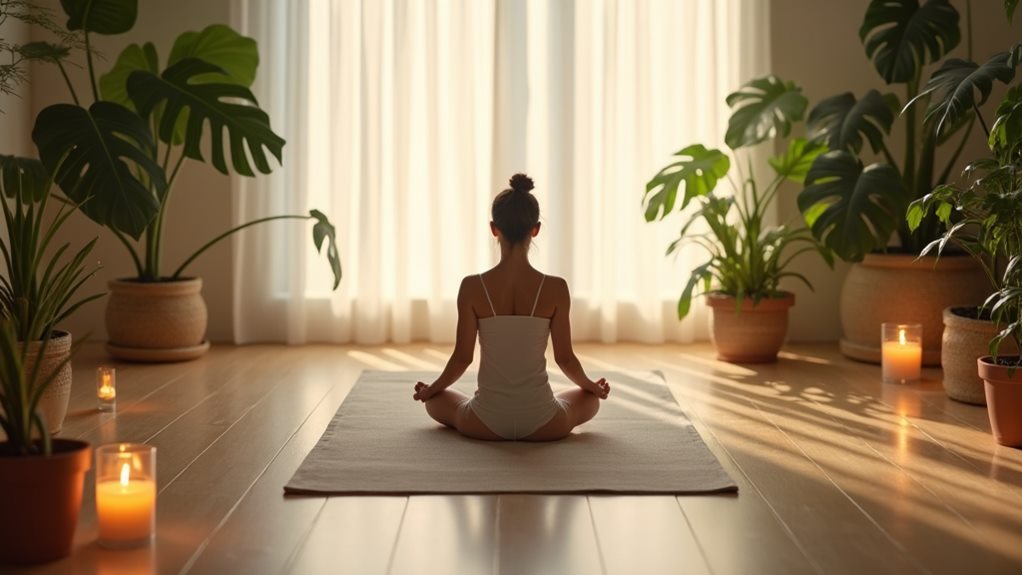
To truly unlock the emotional release that yoga can offer, consider poses specifically designed for this purpose. Certain yoga poses can create a safe space to let go of tension and stress held in your body, leading to significant emotional release. Here’s how you can incorporate these poses to help manage anxiety:
- Child’s Pose & Butterfly Pose: These foundational poses help you create a safe space, promoting relaxation. They encourage you to let go of the tension built up in your body, making emotional release more accessible.
- Fish Pose & Bound Angle Pose: By opening your chest and hips, you’re addressing areas often associated with emotional blockages. These poses facilitate deeper breathing and emotional expression, helping release any emotional weight connected to anxiety.
- Yin Yoga: With its focus on long-held poses like Caterpillar and Sleeping Swan, Yin Yoga promotes introspection and awareness. This gentle approach can help you release pent-up emotions during your practice.
- Grounding Poses like Hero Pose & Tree Pose: Regular practice of these poses can enhance your connection with your emotions, offering a pathway to process and release feelings of anxiety and stress effectively.
Embrace these practices, and experience a natural emotional release journey through yoga.
Techniques for Mindfulness
Mindfulness, when integrated into your yoga practice, transforms each session into a journey toward peace and self-awareness. By focusing your attention on the present moment, you can recognize and acknowledge anxious thoughts without judgment. This approach doesn’t just provide temporary relief; it builds emotional resilience and helps you navigate stress with ease.
Start by centering your attention on your breath. Feel each inhale and exhale moving through your body. This simple act sends calming signals to your brain, fostering relaxation and alleviating anxiety. As you hold poses, notice where you feel tension, and breathe directly into those areas, letting go of stress with every exhale.
Mindfulness techniques encourage you to engage with each feeling and sensation your body experiences during yoga. You’re not just improving your flexibility or strength; you’re cultivating mental clarity and emotional regulation. Studies have shown that incorporating mindfulness into your routines can lead to improved focus, better sleep, and enhanced overall well-being.
Add mindfulness to your yoga practice, and you’ll find that your mat becomes a place where anxiety is acknowledged and gently released, leaving you with a renewed sense of balance and tranquility.
Meditation Practices to Calm
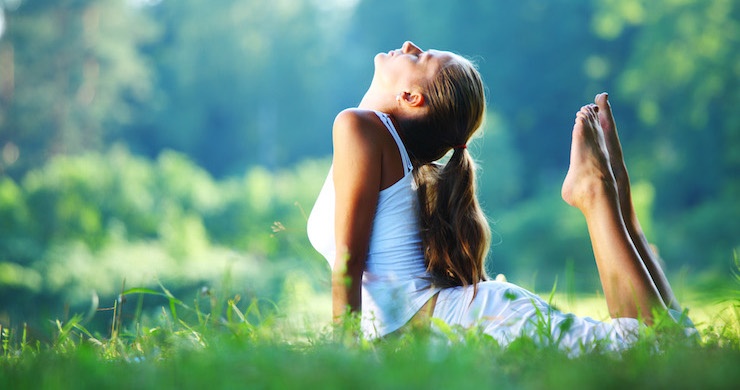
Up through meditation practices, you can effectively calm anxiety, transforming stress into tranquility. Regularly engaging in these practices helps reduce stress levels and promotes a peaceful mind. By incorporating mindfulness meditation into your routine, you’ll observe your thoughts without judgment, ultimately decreasing anxiety. Imagine approaching life’s challenges with clearer thinking and better emotional regulation.
Here’s how to get started:
- Set a Time: Choose a consistent time each day for meditation. Practicing at the same time reinforces the habit and signals your brain it’s time to relax.
- Find a Quiet Space: Designate a peaceful area where you won’t be disturbed, enhancing your ability to focus and breathe deeply during the session.
- Focus on Breathing: Center your attention on your breath. This anchors you in the present moment, a core aspect of mindfulness meditation.
- Observe Your Thoughts: Let thoughts pass without judgment. By doing so, you lessen their hold on you, fostering a sense of calm and clarity.
Research shows meditation doesn’t just ease anxiety, but also bolsters self-awareness and emotional resilience. By integrating meditation practices, you’re actively enhancing your well-being and transforming stress into peaceful living.
Integrating Yoga Into Routine
Isn’t it fascinating how just a few minutes of yoga each day can have a profound impact on reducing anxiety? When you make yoga a part of your routine, you’re essentially giving your mind and body the tools they need to handle stress better. Start by setting a specific time for your yoga practice every day. This not only reinforces the habit but also provides stability, helping you manage anxiety more effectively. Yoga help comes in many forms, such as Hatha or restorative styles that promote relaxation and mindfulness.
Engaging in these practices fosters a calming effect on your nervous system. Combine these yoga styles with breathwork techniques like pranayama to deepen your mind-body connection. This synergy enhances focus and promotes a sense of calm. Practice yoga regularly and watch as it transforms your emotional regulation and equips you to tackle anxiety with greater ease.
To enhance your progress, consider joining a local class or exploring online resources. Learning from certified instructors ensures you practice yoga with proper alignment and technique, maximizing the benefits. Make this journey personal and watch as it reshapes your day-to-day life.
Comparing Yoga and Therapy
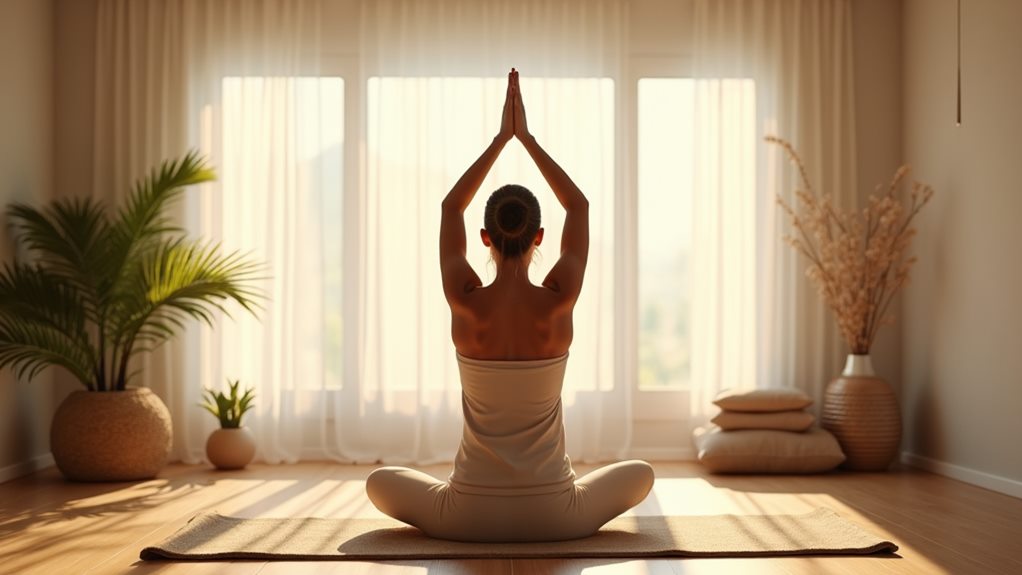
While embracing yoga as part of your daily routine, you might wonder how it compares to traditional therapy in managing anxiety. Let’s dive into how yoga can help with anxiety disorders and explore its unique advantages. First, it’s important to recognize that yoga shouldn’t replace therapy but can complement it beautifully.
Here’s how these two approaches stack up:
- Emotional Regulation: Yoga enhances emotional regulation through breath control and physical movement, helping you manage feelings of anxiety.
- Self-Awareness: Its mindfulness practices boost self-awareness, aligning well with elements of therapies like cognitive-behavioral therapy (CBT).
- Anxiety Reduction: Research shows regular yoga practice leads to significant reductions in anxiety symptoms, similar to therapeutic interventions.
- Comprehensive Strategy: While yoga focuses on the mind-body connection, therapy provides structured support and coping strategies, offering a more comprehensive approach to mental health.
Combining both yoga and therapy can maximize your efforts in tackling anxiety disorders. It’s about finding what works best for you and balancing the physical, emotional, and psychological facets of anxiety management. Trust in the process; integrating yoga with professional guidance could be the key to reclaiming your peace.
Finding Yoga Resources Online
In today’s digital age, accessing yoga resources online has never been easier, and it’s the perfect way to incorporate anxiety-relieving practices into your routine. With an abundance of platforms like YouTube and yoga apps, you can find free instructional videos and guided yoga sequences tailored specifically for stress and anxiety relief, regardless of your skill level. Websites such as Peloton even offer structured classes with various durations, including quick 20-minute yoga flows that fit seamlessly into your schedule, giving you a powerful tool against anxiety.
You don’t have to go at it alone, either. Social media platforms frequently host live yoga sessions or challenges focused on reducing anxiety, creating a supportive community vibe that keeps you motivated and connected to others on similar wellness journeys. These online resources make it easy to start with beginner-friendly classes, helping you learn foundational yoga poses and techniques at your own pace.
Moreover, mental health-focused websites and apps provide additional resources like mindfulness and meditation practices. These complement your yoga practice, further enhancing your emotional regulation and stress management. So dive in, explore these online resources, and find the yoga routine that suits your path to tranquility.
Tips for Safe Practice
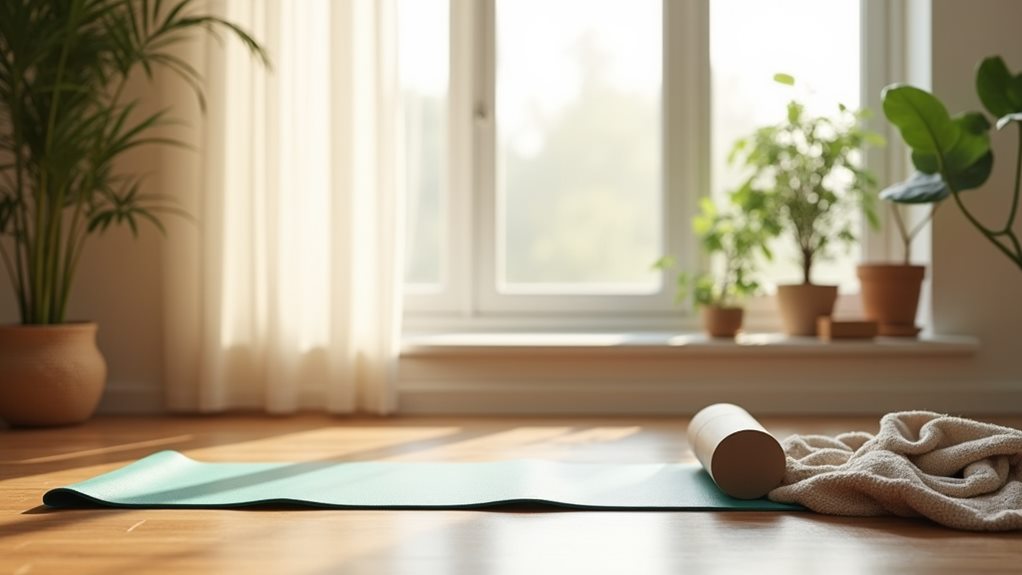
Embarking on a yoga journey, especially to combat anxiety, requires attention to safety and personal comfort. Creating a safe practice begins by consulting a healthcare professional. If you’re dealing with pre-existing health issues or anxiety disorders, it’s crucial to ensure yoga is suitable for you. Your body knows best; it’s vital to listen to your body and respect its cues. Here’s how to make your yoga practice both safe and effective:
- Start with beginner-friendly classes: Whether online or in-person, these sessions help you learn proper techniques, reducing injury risk.
- Create a comfortable space: Choose a quiet, free-from-distractions area. This enhances your focus, making it easier to relax.
- Use props for support: Blocks, cushions, or straps can help ensure comfort, especially if you’re new or not very flexible.
- Modify poses if necessary: If a particular pose feels uncomfortable or triggers anxiety, adjust it or shift to a more restorative position.
These steps pave the way for a rewarding yoga experience. They help you maintain a sense of calm and derive maximum anxiety-relief benefits. Remember, yoga should be a journey of self-discovery and serenity, not stress.
Try Savasana to Unwind
By understanding the profound impact yoga can have on alleviating anxiety, we have explored various techniques and poses, highlighting their therapeutic benefits. Among these, Savasana stands out as a vital practice for unwinding and achieving mental relaxation. Through this exploration, it becomes clear that integrating mindful poses like Savasana into one’s daily routine is not just a way to manage anxiety but a holistic approach to nurturing mental health.
Savasana, often referred to as the Corpse Pose, offers a gateway to deep relaxation and a reprieve from the stresses of daily life. By spending about 5 to 10 minutes in this position, individuals can notably decrease their stress levels, experiencing a calmness that aids emotional stability. This restorative posture encourages the release of physical and mental tension, enabling practitioners to embrace a state of tranquillity that is beneficial for their overall well-being. Moreover, Savasana’s focus on breath awareness is crucial in calming the nervous system, fostering mindfulness, and providing a sense of peace that can be difficult to attain in our fast-paced world.
Practicing Savasana regularly not only enhances relaxation but also boosts mental clarity and focus, creating an opportunity for the mind to reset. This makes it particularly effective after engaging in more physically strenuous yoga routines. The mental spaciousness and clarity achieved through Savasana are akin to pressing a reset button, paving the way for enhanced cognitive function and emotional resilience. By incorporating this pose into a comprehensive yoga routine designed to combat anxiety, individuals can cultivate a greater sense of balance and mental clarity, creating a strong foundation for improved mental health and emotional well-being. As such, embracing yoga, and especially the Savasana pose, offers a holistic path to nurturing a more serene, mindful, and centred life.

